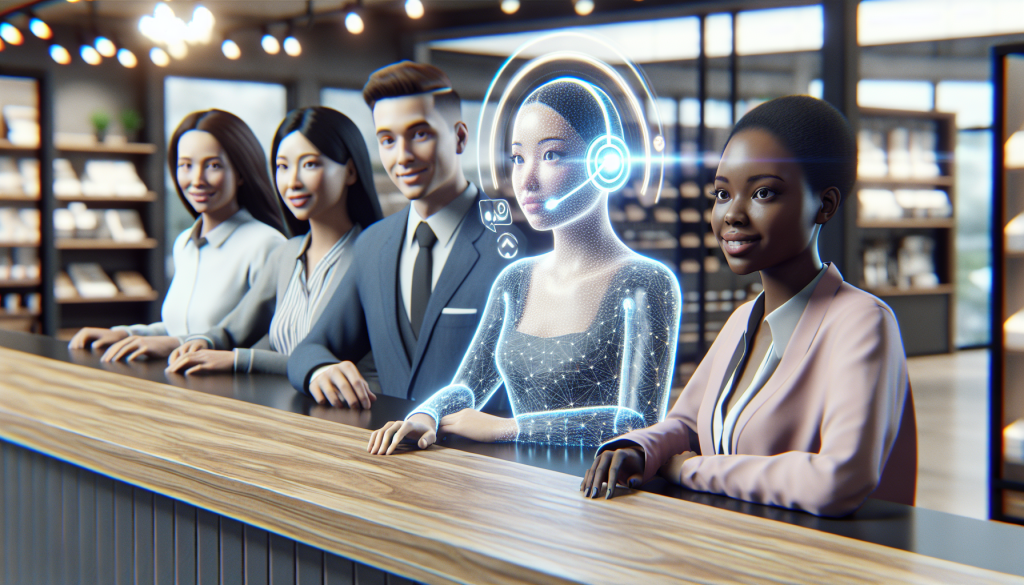
In the ever-evolving landscape of digital interaction, chatbots have emerged as a transformative force, reshaping how businesses engage with their customers. As companies strive to meet the demands of an increasingly connected world, “Chatbots as a Service” has become a pivotal solution, providing scalable, efficient, and round-the-clock customer support. This revolutionary approach to customer interaction has the potential to redefine service industries globally, offering unparalleled convenience and efficiency.
Chatbots: A New Era of Customer Interaction
Chatbots are sophisticated AI-driven programs designed to simulate human-like conversations. By leveraging natural language processing (NLP) and machine learning, they interpret, process, and respond to user queries in real-time. The advent of chatbots as a service has enabled businesses to deploy these virtual assistants without the need for extensive hardware investments or technological expertise. This accessibility has positioned chatbots as a vital tool for businesses of all sizes.
The Benefits of Chatbots as a Service
One of the primary advantages of chatbots as a service is their ability to provide 24/7 customer support. Unlike human agents, chatbots are not constrained by time zones, working hours, or geographical locations. This continuous availability ensures that customers can access assistance whenever they need it, enhancing user satisfaction and fostering loyalty.
Moreover, chatbots as a service can efficiently handle a high volume of queries simultaneously, reducing wait times and freeing human agents to focus on more complex issues that require a personal touch. This allows businesses to optimize their resources and improve service delivery.
Personalization is another key benefit of chatbots. By analyzing user data and interaction history, chatbots can tailor responses to individual users, creating a more engaging and personalized experience. This bespoke approach not only enhances customer satisfaction but also provides valuable insights into consumer preferences and behaviors.
Chatbots in Action: Industry Applications
From retail and finance to healthcare and beyond, various industries are harnessing the power of chatbots to revolutionize customer interaction. In retail, chatbots guide users through the shopping process, offering product recommendations and assisting with purchases. By providing immediate answers to product queries and facilitating transactions, chatbots help reduce cart abandonment rates and boost sales.
In the financial sector, chatbots assist with banking transactions, balance inquiries, and fraud detection. By swiftly handling routine tasks, they free up human agents to focus on more critical issues, such as financial planning and advisory services.
Healthcare has also seen a significant impact, with chatbots offering preliminary medical advice, appointment scheduling, and medication reminders. By assisting with these routine tasks, healthcare professionals can focus on complex patient interactions and care.
The Road Ahead: Challenges and Innovations
Despite their advantages, chatbots as a service are not without challenges. The key to successful implementation is ensuring they are designed to meet specific business needs while providing a seamless user experience. Poorly designed chatbots can lead to customer frustration and dissatisfaction, a risk that businesses must mitigate through careful planning and regular updates.
Another concern is data privacy. As chatbots collect and process vast amounts of user data, businesses must ensure they comply with data protection regulations and maintain robust security measures to prevent breaches.
Looking forward, developments in artificial intelligence and machine learning promise to enhance the capabilities of chatbots even further. Advances in sentiment analysis, for example, will enable chatbots to interpret user emotions, allowing them to respond more empathetically. This emotional intelligence will create a more human-like interaction, bridging the gap between AI and human agents.
Moreover, the integration of voice recognition technology is set to transform chatbots as we know them, enabling voice-activated assistants to provide hands-free interaction—a boon for sectors like automotive and smart home industries.
Conclusion
The rise of chatbots as a service marks a significant paradigm shift in customer interaction. By offering a scalable, efficient, and personalized service, chatbots are revolutionizing industries and redefining customer expectations. While challenges remain, continued innovation and technological advancement promise to overcome these hurdles and further enhance the capabilities of these digital assistants.
As businesses continue to adapt to this new era of communication, the role of chatbots as a service in shaping the future of customer interaction is undeniable. Embracing this technology can offer companies a competitive edge, enhancing customer satisfaction and loyalty in a global market that values speed, efficiency, and personalization.